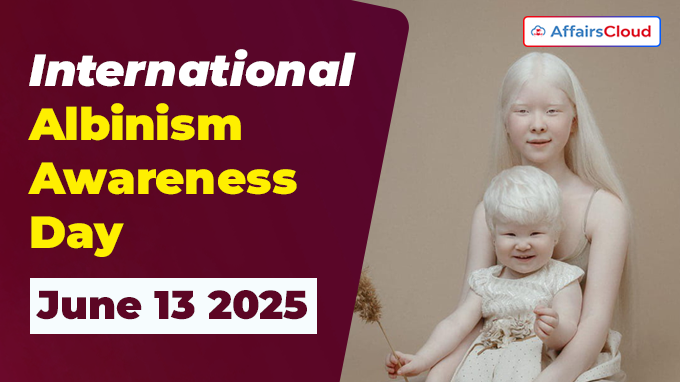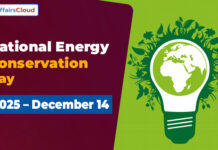 The United Nations (UN’s) International Albinism Awareness Day (IAAD) is globally observed every year on June 13 to raise awareness about albinism, a rare, non-contagious, inherited genetic condition present at birth, and advocating for the human rights of persons with albinism worldwide.
The United Nations (UN’s) International Albinism Awareness Day (IAAD) is globally observed every year on June 13 to raise awareness about albinism, a rare, non-contagious, inherited genetic condition present at birth, and advocating for the human rights of persons with albinism worldwide.
- June 13, 2025, marks the 11th observance of IAAD and the 10th anniversary of the Independent Expert mandate dedicated to protecting the rights of persons with albinism.
2025 Theme:
The theme for IAAD 2025 is “Demanding our rights: Protecting our skin, Preserving our lives.”
- This theme underscores the urgent need for global action to raise awareness about albinism and specifically combat skin cancer risks through measures like public education, regular skin screenings, and ensuring access to sunscreen.
Background:
i.On June 13, 2013, the United Nations Human Rights Council (UNHRC) adopted its inaugural resolution focused on albinism, A/HRC/RES/23/13, addressing the prevention of attacks and discrimination against persons with albinism.
ii.On December 18, 2014, the United Nations General Assembly (UNGA) formally proclaimed June 13 as International Albinism Awareness Day(IAAD) through resolution A/RES/69/170.
- Yusuf Mohamed Ismail Bari-Bari, the late Ambassador of Somalia to the United Nations, played a key role in championing the rights of persons with albinism. He collaborated with Canada based Under The Same Sun(UTSS), a human rights organization focused on albinism advocacy, especially in Africa.
iii.The first-ever IAAD was observed on June 13, 2015.
Note: The date June 13 was chosen for IAAD specifically because it commemorates the adoption of the pivotal 2013 UNHRC resolution.
Establishment & Evolution of the Mandate:
i.In April 2015, UNHRC adopted A/HRC/RES/28/6 to establish the mandate of an Independent Expert on the enjoyment of human rights by persons with albinism.
ii.In June 2015, UNHRC appointed Ikponwosa Ero from Nigeria as the first Independent Expert on the enjoyment of human rights by persons with albinism. She was succeeded by Muluka-Anne Miti-Drummond from Zambia in August 2021.
iii.In April 4, 2024, the UNHRC extended the crucial mandate of the Independent Expert through resolution A/HRC/RES/55/18.
What is Albinism?
i.Albinism is a rare, non-contagious genetic disorder inherited from both parents affecting all ethnicities.
ii.The condition results from a defect in genes responsible for melanin production, such as those causing Oculocutaneous Albinism (OCA) and Ocular Albinism (OA).
Key Characteristics:
i.Cause: A significant absence or reduction of melanin pigment in the hair, skin, and eyes.
ii.Vulnerability: Lack of melanin makes individuals highly susceptible to sun exposure, leading to a greatly increased risk of skin cancer and often causing significant vision impairment.
Types of Albinism:
i.Oculocutaneous Albinism (OCA): This most common type, affecting the skin, hair, and eyes.
ii.Ocular Albinism (OA): Primarily affects the eyes; skin and hair colour may appear normal or near-normal.
iii.Rare Syndromes: Conditions like Hermansky-Pudlak Syndrome and Chediak-Higashi Syndrome include albinism alongside other serious health complications.
Common Symptoms:
i.Extremely fair skin and white or very light-coloured hair.
ii.Skin that burns very easily in the sun.
iii.Vision issues: impaired eyesight, nystagmus (involuntary eye movements), photophobia, strabismus
Global Prevalence:
Statistics highlight varying prevalence rates:
i.Sub-Saharan Africa: Affects approximately 1 in 5,000 people.
ii.Europe and North America: Affects approximately 1 in 20,000 people.
About United Nations Human Rights Council (UNHRC):
The UNHRC is a body of the United Nations (UN) responsible for the promotion and protection of human rights globally.
President – Jürg Lauber
Headquarters – Geneva, Switzerland
Founded – 2006




